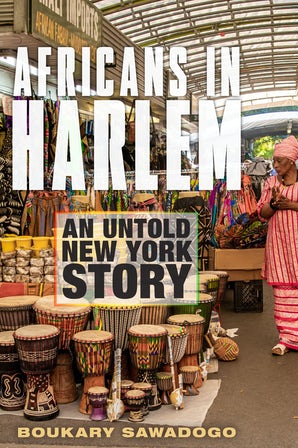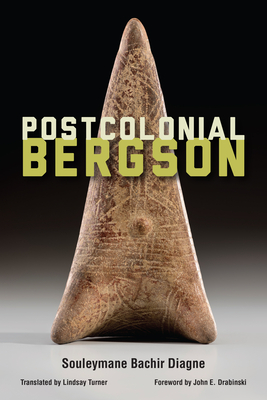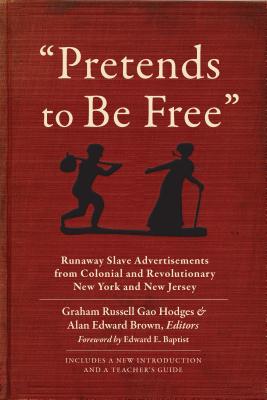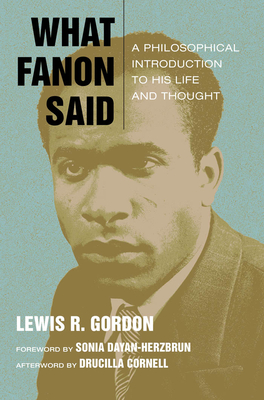6 Books Published by Fordham University Press on AALBC — Book Cover Collage
 Hamilton Heights and Sugar Hill: Alexander Hamilton’s Old Harlem Neighborhood Through the Centuries
Hamilton Heights and Sugar Hill: Alexander Hamilton’s Old Harlem Neighborhood Through the Centuries
by Davida Siwisa JamesFordham University Press (Apr 02, 2024)
Read Detailed Book Description
Explores four centuries of colonization, land divisions, and urban development around this historic landmark neighborhood in West Harlem
It was the neighborhood where Alexander Hamilton built his country home, George Gershwin wrote his first hit, a young Norman Rockwell discovered he liked to draw, and Ralph Ellison wrote Invisible Man. Through words and pictures, Hamilton Heights and Sugar Hill traces the transition of this picturesque section of Harlem from lush farmland in the early 1600s to its modern-day growth as a unique Manhattan neighborhood highlighted by stunning architecture, Harlem Renaissance gatherings, and the famous residents who called it home.
Stretching from approximately 135th Street and Edgecombe Avenue to around 165th, all the way to the Hudson River, this small section in the Heights of West Harlem is home to so many significant events, so many extraordinary people, and so much of New York’s most stunning architecture, it’s hard to believe one place could contain all that majesty. Author Davida Siwisa James brings to compelling literary life the unique residents and dwelling places of this Harlem neighborhood that stands at the heart of the country’s founding. Here she uncovers the long-lost history of the transitions to Hamilton Grange in the aftermath of Alexander Hamilton’s death and the building boom from about 1885 to 1930 that made it one of Manhattan’s most historic and architecturally desirable neighborhoods, now and a century ago. The book also shares the story of the LaGuardia High School of Music & Art, one of the first in the nation to focus on arts and music. The author chronicles the history of the James A. Bailey House, as well as the Morris-Jumel Mansion, Manhattan’s oldest surviving residence and famously known as George Washington’s headquarters at the start of the American Revolution.
By telling the history of its vibrant people and the beautiful architecture of this lovely, well-maintained historic landmark neighborhood, James also dispels the misconception that Harlem was primarily a ghetto wasteland. The book also touches upon the Great Migration of Blacks leaving the South who landed in Harlem, helping it become the mecca for African Americans, including such Harlem Renaissance artists and luminaries as Thurgood Marshall, Count Basie, Duke Ellington, Mary Lou Williams, Paul Robeson, Regina Anderson Andrews, and W. E. B. Du Bois.
 Africans in Harlem
Africans in Harlem
by Boukary SawadogoFordham University Press (Jun 07, 2022)
Read Detailed Book Description
The untold story of African-born migrants and their vibrant African influence in Harlem. From the 1920s to the early 1960s, Harlem was the intellectual and cultural center of the Black world.
The Harlem Renaissance movement brought together Black writers, artists, and musicians from different backgrounds who helped rethink the place of Black people in American society at a time of segregation and lack of recognition of their civil rights. But where is the story of African immigrants in Harlem’s most recent renaissance?
Africans in Harlem examines the intellectual, artistic, and creative exchanges between Africa and New York dating back to the 1910s, a story that has not been fully told until now. From Little Senegal, along 116th Street between Lenox Avenue and Frederick Douglass Boulevard, to the African street vendors on 125th Street, to African stores, restaurants, and businesses throughout the neighborhood, the African presence in Harlem has never been more active and visible than it is today.
In em>Africans in Harlem , author, scholar, writer, and filmmaker Boukary Sawadogo explores Harlem’s African presence and influence from his own perspective as an African-born immigrant. Sawadogo captures the experiences, challenges, and problems African migr’s have faced in Harlem since the 1980s, notably work, interaction, diversity, identity, religion, and education. With a keen focus on the history of Africans through the lens of media, theater, the arts, and politics, this historical overview features compelling character-driven narratives and interviews of longtime residents as well as community and religious leaders. A blend of self-examination as an immigrant member in Harlem and research on diasporic community building in New York City, em>Africans in Harlem reveals how African immigrants have transformed Harlem economically and culturally as they too have been transformed. It is also a story about New York City and its self-renewal by the contributions of new human capital, creative energies, dreams nurtured and fulfilled, and good neighbors by drawing parallels between the history of the African presence in Harlem with those of other ethnic immigrants in the most storied neighborhood in America.
 Postcolonial Bergson
Postcolonial Bergson
by Souleymane Bachir DiagneFordham University Press (Oct 08, 2019)
Read Detailed Book Description
Henri Bergson has been the subject of keen interest within French philosophy ever since being championed by Gilles Deleuze and others. Yet his influence extends well beyond European philosophy, especially within Africa and South Asia. Postcolonial Bergson traces the influence of Bergson’s thought through the work of two major figures in the postcolonial struggle, Muhammad Iqbal and Léopold Sédar Senghor. Poets and statesmen as well as philosophers, both of these thinkers—the one Muslim and the other Catholic—played an essential political and intellectual role in the independence of their respective countries. Both found, in Bergson’s work, important support for their philosophical, cultural, and political projects.
For Iqbal, a founding father of independent Pakistan, Bergson’s conceptions of time and creative evolution resonated with the need for the “reconstruction of religious thought in Islam,” a religious thought newly able to incorporate innovation and change. For Senghor, Bergsonian ideas of perception, intuition, and élan vital—filtered in part through the work of the French philosopher Pierre Teilhard de Chardin—proved crucial for thinking about African art, as well as foundational for his formulations of African socialism and his visions of an unalienated African future.
At a moment of renewed interest in Bergson’s philosophy, this book, by a major figure in both French and African philosophy, gives an expanded idea of the political ramifications of Bergson’s thought in a postcolonial context.
 “Pretends to Be Free:” Runaway Slave Advertisements from Colonial and Revolutionary New York and New Jersey
“Pretends to Be Free:” Runaway Slave Advertisements from Colonial and Revolutionary New York and New Jersey
by Graham Russell Gao Hodges and Alan Edward BrownFordham University Press (Jan 08, 2019)
Read Detailed Book Description
Important documents, and painstaking scholarship, become more significant over time. ’Pretends to Be Free’ was a revelation two decades ago, and it remains one today. The first slave narratives were the ones told by the master class, but they are no less informative for that—especially when collected with such care and contextualized with recent and sympathetic scholarship.—David Waldstreicher, The Graduate Center, City University of New York
 Boss of Black Brooklyn: The Life and Times of Bertram L. Baker
Boss of Black Brooklyn: The Life and Times of Bertram L. Baker
by Ron HowellEmpire State Editions (Oct 02, 2018)
Read Detailed Book Description
Boss of Black Brooklyn presents a riveting and untold story about the struggles and achievements of the first black person to hold public office in Brooklyn. Bertram L. Baker immigrated to the United States from the Caribbean island of Nevis in 1915. Three decades later, he was elected to the New York state legislature, representing the Bedford Stuyvesant section. A pioneer and a giant, Baker has a story that is finally revealed in intimate and honest detail by his grandson Ron Howell.Boss of Black Brooklyn begins with the tale of one man’s rise to prominence in a fascinating era of black American history, a time when thousands of West Indian families began leaving their native islands in the Caribbean and settling in New York City. In 1948, Bert Baker was elected to the New York state assembly, representing the growing central Brooklyn neighborhood of Bedford Stuyvesant. Baker loved telling his fellow legislators that only one other Nevisian had ever served in the state assembly. That was Alexander Hamilton, the founding father. Making his own mark on modern history, Baker pushed through one of the nation’s first bills outlawing discrimination in the sale or rental of housing. Also, for thirty years, from 1936 to 1966, he led the all-black American Tennis Association, as its executive secretary. In that capacity he successfully negotiated with white tennis administrators, getting them to accept Althea Gibson into their competitions. Gibson then made history as the first black champion of professional tennis. Yet, after all of Baker’s wonderful achievements, little has been written to document his role in black history.Baker represents a remarkable turning point in the evolution of modern New York City. In the 1940s, when he won his seat in the New York state assembly, blacks made up only 4 percent of the population of Brooklyn. Today they make up a third of the population, and there are scores of black elected officials. Yet Brooklyn, often called the capital of the Black Diaspora, is a capital under siege. Developers and realtors seeking to gentrify the borough are all but conspiring to push blacks out of the city. A very important and long-overdue book, Boss of Black Brooklyn not only explores black politics and black organizations but also penetrates Baker’s inner life and reveals themes that resonate today: black fatherhood, relations between black men and black women, faithfulness to place and ancestry. Bertram L. Baker’s story has receded into the shadows of time, but Boss of Black Brooklyn recaptures it and inspires us to learn from it.
 What Fanon Said: A Philosophical Introduction to His Life and Thought
What Fanon Said: A Philosophical Introduction to His Life and Thought
by Lewis R. GordonFordham University Press (Apr 01, 2015)
Read Detailed Book Description
Antiblack racism avows reason is white while emotion, and thus supposedly unreason, is black. Challenging academic adherence to this notion, Lewis R. Gordon offers a portrait of Martinican-turned-Algerian revolutionary psychiatrist and philosopher Frantz Fanon as an exemplar of "living thought" against forms of reason marked by colonialism and racism. Working from his own translations of the original French texts, Gordon critically engages everything in Fanon from dialectics, ethics, existentialism, and humanism to philosophical anthropology, phenomenology, and political theory as well as psychiatry and psychoanalysis.
Gordon takes into account scholars from across the Global South to address controversies around Fanon’s writings on gender and sexuality as well as political violence and the social underclass. In doing so, he confronts the replication of a colonial and racist geography of reason, allowing theorists from the Global South to emerge as interlocutors alongside northern ones in a move that exemplifies what, Gordon argues, Fanon represented in his plea to establish newer and healthier human relationships beyond colonial paradigms.
